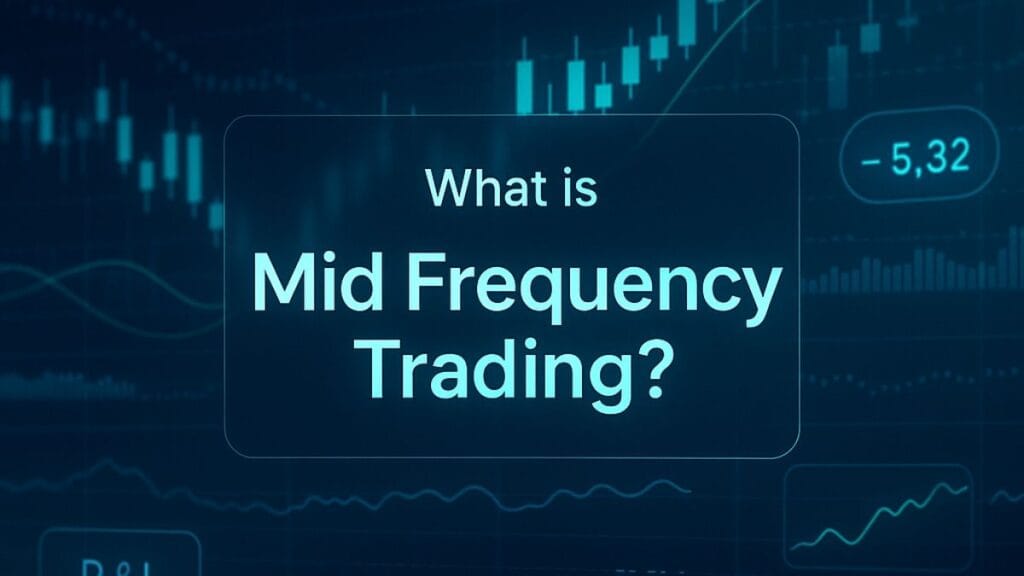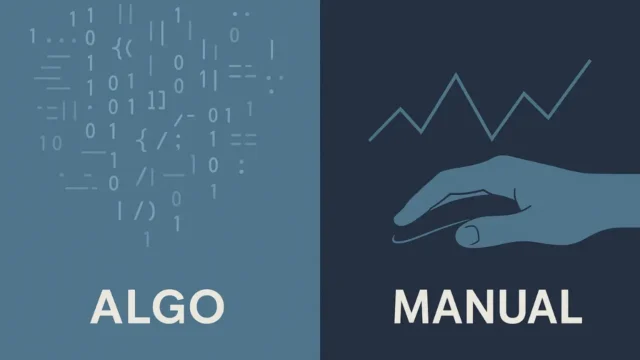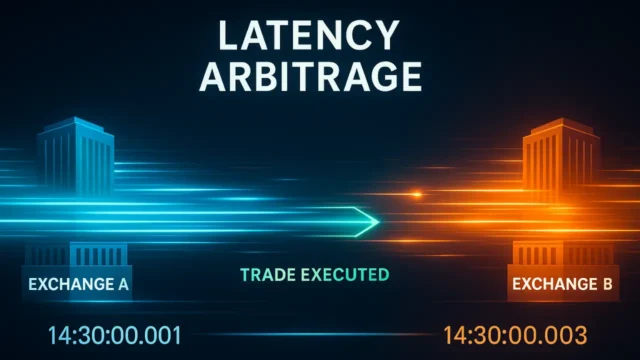Follow Us
What is Mid Frequency Trading (MFT)? A Practical Guide

When most people think about trading, two extremes come to mind: lightning fast high frequency trading (HFT) or the patience-driven world of swing & long term investing.
But hidden between these two lies an often overlooked strategy: mid frequency trading (MFT).
MFT has gained traction because it doesn’t demand billion-dollar infrastructure like HFT, yet it offers more opportunities than slow moving swing strategies.
It’s a middle path that balances speed with strategic depth, making it one of the most intriguing approaches in modern markets.
So, is mid frequency trading the “sweet spot” for traders who want speed without chaos?
To put things into perspective, 60–75% of trading volume in developed markets is now algorithmically driven, with MFT representing a meaningful share of this activity.
This highlights how MFT occupies an increasingly important “middle ground” in modern markets.
Key Takeaways
- Mid frequency trading balances speed with strategy, faster than swing trading, slower than HFT.
- It offers reduced infrastructure costs compared to HFT while keeping an edge over traditional approaches.
- MFT thrives on exploiting medium-term inefficiencies & liquidity shifts.
- Risk management is essential since trades still move fast.
- Tools & data quality often matter more than raw speed.
What is Mid Frequency Trading?
Mid frequency trading sits in the middle ground between ultra fast HFT and slower trading styles like swing or position trading.
While HFT firms execute trades in microseconds or milliseconds, MFT typically operates on a scale of minutes to hours, sometimes stretching into a few days.
The goal is not to beat every other order by nanoseconds but to capture short to medium term inefficiencies that appear too fleeting for swing traders yet too extended for pure HFT.
Why Traders Use Mid Frequency Strategies
So why would a trader choose MFT instead of going all in on speed or patience?
1. Lower Costs vs HFT
HFT demands expensive co-location servers, ultra-low-latency feeds & an army of quants. MFT doesn’t require that extreme setup, making it more accessible for smaller firms & advanced individuals.
2. More Opportunities vs Swing Trading:
Swing traders might only see a few setups per week. Mid frequency traders can capture multiple opportunities each day without holding positions overnight for long stretches.
3. Balanced Risk Exposure
By trading within the day or over short periods, MFT reduces the risk of surprise overnight news or weekend events impacting positions.
Comparison: HFT vs MFT vs Swing Trading
| Feature | High-Frequency Trading (HFT) | Mid Frequency Trading (MFT) | Swing Trading |
|---|---|---|---|
| Trade Frequency | Thousands per second | Several per day (minutes–hours) | Few per week (days–weeks) |
| Cost | Extremely high (servers, co-location, ultra-low latency feeds) | Moderate (data feeds, algo platforms) | Low (basic brokerage + charts) |
| Infrastructure | Advanced: nanosecond execution, colocated servers | Solid tech stack: real-time data, EMS, APIs | Minimal: broker platform + research tools |
| Risk Exposure | Very short-term market noise | Short-term volatility, intraday events | Overnight gaps, long-term market swings |
Core Strategies in Mid Frequency Trading
Here are some of the most common approaches used in MFT:
1. Market Making with Longer Holding Periods
Unlike HFT firms that flip positions within seconds, MFT market-makers may hold positions for several minutes or even hours. They provide liquidity by posting buy & sell quotes slightly apart, earning the spread while managing inventory risk.
2. Statistical Arbitrage
This involves spotting short term mispricings between correlated assets. For example, if two tech stocks typically move together but temporarily diverge, an MFT system might buy one & short the other, expecting convergence within hours.
Each strategy relies on discipline & automation. Unlike slower styles, hesitation in MFT can mean missed opportunities.
3. Event-Driven Trading
Earnings releases, central bank announcements, or even mid-day breaking news can cause volatility spikes. MFT traders design models to capture these short lived opportunities before markets stabilize.
4. Liquidity Provision & Order Flow Exploitation
By analyzing real-time order book data, MFT strategies can detect when big players are entering or exiting the market. Traders then position accordingly, capitalizing on the predictable short-term momentum.
Tools & Technology Required in MFT
Mid frequency trading may not demand the arms race of nanosecond speed, but it still requires a robust tech stack to compete effectively.
- High-Quality Data Feeds: While you don’t need the absolute fastest tick data in existence, real-time & reliable feeds are critical. Delayed or incomplete data means missed signals.
- Execution Management Systems (EMS): These platforms route orders smartly across exchanges, minimizing slippage & improving fill quality.
- Risk Controls: With trades happening quickly, risk systems must be automated, cutting losses fast & enforcing position limits.
- Monitoring Tools: Dashboards that track performance, P&L, and exposure help ensure strategies stay on track throughout the day.
In 2025, access to mid frequency trading has become easier thanks to cloud-native platforms.
Services like QuantConnect now let traders research, backtest, and deploy strategies directly in the cloud, while brokers such as Interactive Brokers and TradeStation provide robust APIs for execution.
This shift lowers barriers, allowing smaller firms and advanced retail traders to run MFT strategies without the heavy infrastructure once required.
Risks & Challenges in Mid Frequency Trading
Like any trading approach, mid frequency trading comes with its own set of challenges.
Market Volatility & Slippage
Rapid market shifts can wipe out carefully calculated positions. Because MFT trades aren’t ultra-fast, execution can sometimes lag, leading to slippage where orders fill at worse prices than expected.
Competition from Both Sides
MFT sits in the middle of a battlefield. On one side are HFT firms armed with cutting edge infrastructure. On the other side are swing & position traders who can wait out short-term noise. Mid frequency traders must carve out niches that neither side dominates.
Infrastructure & Data Costs
While cheaper than HFT, quality data feeds & execution systems are still not free. For smaller traders, these costs can eat into profitability.
Regulatory Considerations
Mid frequency trading avoids some of the intense scrutiny aimed at HFT, but regulators still monitor algorithmic strategies closely. Risk controls & compliance frameworks are essential.
While MFT avoids the intense scrutiny aimed at high-frequency trading, it still falls under algorithmic trading regulations worldwide.
In the U.S., the SEC requires detailed audit trails and risk safeguards, while in Europe, MiFID II enforces transparency and algo testing standards.
Markets like India, through SEBI, have also expanded rules for retail algo participation. Traders pursuing MFT must stay compliant, as regulatory landscapes continue evolving globally.
Many aspiring traders underestimate the psychological challenge of MFT. Even if execution is automated, monitoring fast-paced trades requires mental stamina & discipline.
Who Should Consider Mid Frequency Trading?
MFT isn’t for everyone, it requires a balance of capital, technology, & skill.
- Hedge Funds & Proprietary Firms: These players often use MFT strategies to complement other approaches, diversifying their trading edge.
- Advanced Retail Traders: While retail access is limited compared to institutions, sophisticated traders with access to quality platforms & APIs can attempt scaled-down versions of MFT.
- Not for Beginners: The learning curve is steep. Without proper preparation, it’s easy to blow up an account chasing opportunities at this speed.
In short: If you can’t compete with HFT firms but don’t want to sit on trades for weeks, mid frequency trading might be your best middle ground.
FAQ: Mid Frequency Trading
Is mid frequency trading profitable?
Yes, profitability depends on strategy design, execution quality, & risk management. While not as costly as HFT, MFT still requires discipline & a solid system to consistently capture short-term inefficiencies.
Do retail traders have access to MFT?
Yes, but on a limited scale. Advanced platforms with algorithmic trading capabilities allow retail traders to implement MFT strategies. However, success often requires strong coding skills, reliable data feeds, & strict risk controls.
Conclusion
Mid frequency trading fills the gap between high-frequency machines & patient swing traders. It id fast enough to capture daily opportunities, yet measured enough to avoid the infrastructure arms race of HFT.
Action Steps if you are interested in MFT:
- Research strategies that work within MFT timeframes, such as arbitrage trading or event-driven models.
- Assess the true costs of data, platforms, & infrastructure before diving in.
- Test extensively in simulated or paper-trading environments before committing capital.
Final thought: In a market dominated by extremes, mid frequency trading may just be the goldilocks zone, not too fast, not too slow, but just right for the right kind of trader.
Disclaimer:
This content is for informational purposes only and should not be considered financial advice.
Read full Disclaimer.




